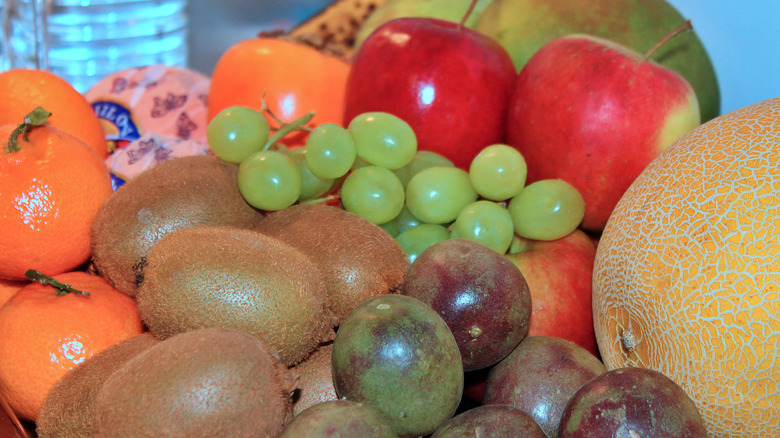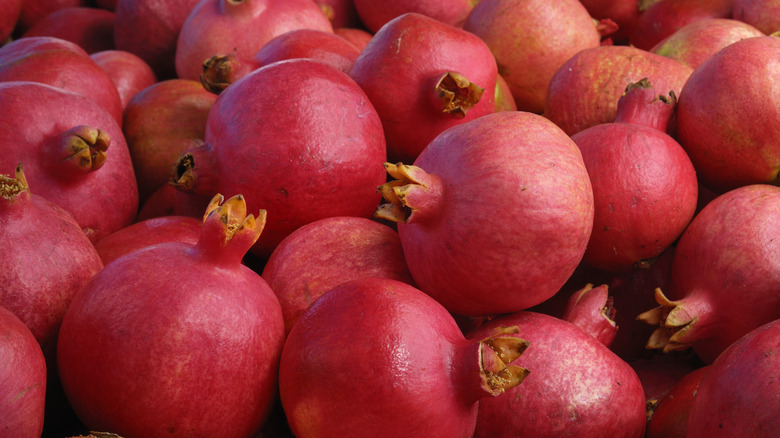The Meaning Behind Eating Round Fruit On New Year's
Around the world, many people celebrate the new year with good luck traditions. The most well-known might be staying up until midnight at New Year's Eve parties, but depending on where you live, it's probably hardly the only one. You may have seen fruits specifically set out for New Year's Eve; eating lots of different round-shaped fruits is a New Year's celebration commonly done in the Philippines, but it's spread far enough that you're likely to see it elsewhere.
Why round fruits? It's because round fruits such as apples, oranges, grapes, melons, and papayas are the same shape as coins. By eating money-shaped food, it's thought that you're setting yourself up for a prosperous new year. The sweetness of the fruit is also believed to bring good luck. The tradition often calls for 12 (and sometimes 13 or even 14) different fruits to be set out on New Year's Eve and eaten over the next few days for good luck. The numbers are significant, too. The 12 fruits symbolize the months in a calendar year; additional fruits are seen as bringing even more luck by some, while others include them to honor the previous year as well as the future.
Good luck in the new year
The practice of eating 12 round fruits is likely a variation of an old Spanish tradition called "las doce uvas de la suerte" or "the twelve lucky grapes." According to the tradition, you're supposed to pop a grape into your mouth as the New Year's Eve bells toll (the chimes represent the months of the year) just before the clock strikes midnight. Doing it will, of course, bring you good luck for the new year. The tradition is still popular in Spain and some Latin American countries today.
Spanish colonists likely brought the tradition to the Philippines, and there, it evolved into the broader version involving many different round fruits. It is also linked to the idea that wearing polka dots on your clothes (again, because of their round shape) is auspicious. Nowadays, the tradition of round fruit at New Year's has spread to different places around the world, often mixed with other superstitions about specific New Year's foods for good luck.
More round fruit rituals
Fruits and round things frequently appear in New Year's Eve celebrations worldwide. A similar version exists in the American South with a specific dish called Hoppin' John. The primary ingredient is black-eyed peas, which are also chosen for having the same round shape as a coin. The beans are often served with collard greens (the color of money), golden cornbread, and pork.
Another variation in Greece and Turkey involves one round fruit in particular: pomegranate. Instead of eating it, you're meant to throw it and smash it on the ground. Then, you count how many pomegranate seeds you find; the more you see, the more good luck you'll have in the new year.
A New Year's celebration practiced more broadly around the world calls for ring-shaped foods instead, such as donuts or bundt cakes. The rings represent the calendar's circular nature, which makes for both a good metaphor and a good reason to eat some sugary desserts during the holiday.


